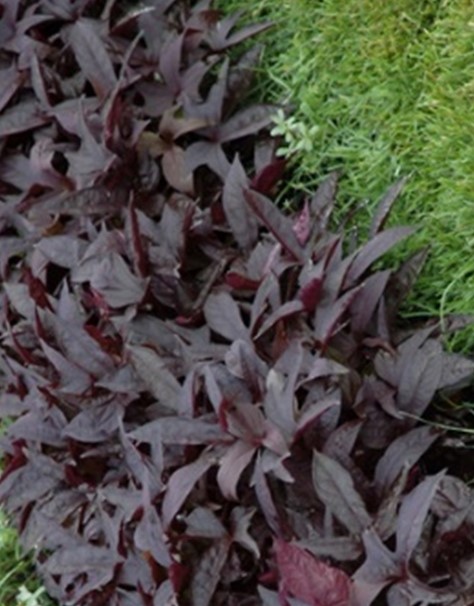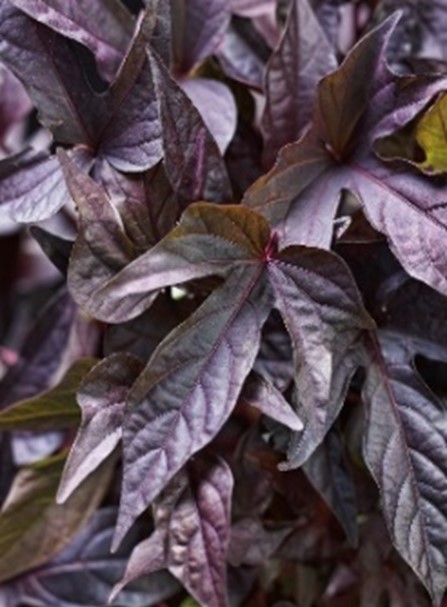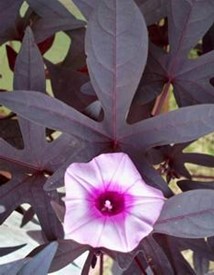Sweet Potato Vine ‘Blackie’
Ipomoea batatas ‘Blackie’



Characteristics
- Type: Annual
- Native Range: Mexico
- Zone: 9 – 11
- Height: 6 – 12 Inches
- Spread: 8 – 10 Feet
- Bloom Time: Rarely flowers
- Bloom Description: Pale pink to violet
- Sun: Full sun
- Water: Medium
- Maintenance: Low
- Suggested Use: Annual, Ground Cover
- Flower: Showy
- Leaf: Colorful
- Tolerate: Deer, Drought, Dry Soil
Culture
Sweet Potato Vine ‘Blackie’ is a tender perennial that is winter hardy to USDA Zones 9-11. In colder regions, grow as an annual or dig tubers in fall. Easily grown in average, medium, well-drained soils in full sun. Best leaf color usually occurs in full sun. Consistently moist soils are best. If Sweet Potato Vine ‘Blackie’ plants die in winter, replant in spring.
Noteworthy Characteristics
Ipomoea batatas, commonly called sweet potato or sweet potato vine, is native to tropical America. It is a tuberous rooted tender perennial that has been cultivated for its orange-fleshed edible tubers for over 2000 years. It was reportedly brought back to Europe from the New World by Columbus. Today, the sweet potato is a popular root vegetable that is grown in vegetable gardens and as a commercial food crop throughout the world. This vegetable has become a popular ornamental foliage plant. If grown as a ground cover, plant stems typically mound to 9” tall but spread by trailing stems to 8-10’ wide, rooting in the ground at the nodes as they go. Leaves of the ornamental varieties are heart-shaped to palmately-lobed (to 6” long) and come in bright green, dark purple, chartreuse and variegated (green with pink or white) colors. Although species plants produce pale pink to violet trumpet-shaped flowers, ornamental varieties usually do not flower. Tubers of the ornamental varieties are edible, but are not as tasty as those of the varieties specifically bred for food production.
Problems
No serious insect or disease problems. Fungal leaf diseases are somewhat common, particularly if plants are grown in the same garden area year after year. Watch for thrips and flea beetles.
Garden Uses
Species cultivars are ornamental subtropical vines that are most often used as sprawling ground covers or as foliage contrasts grown to hang down over the edge of containers or window boxes.
Courtesy of Missouri Botanical Garden Plant Finder